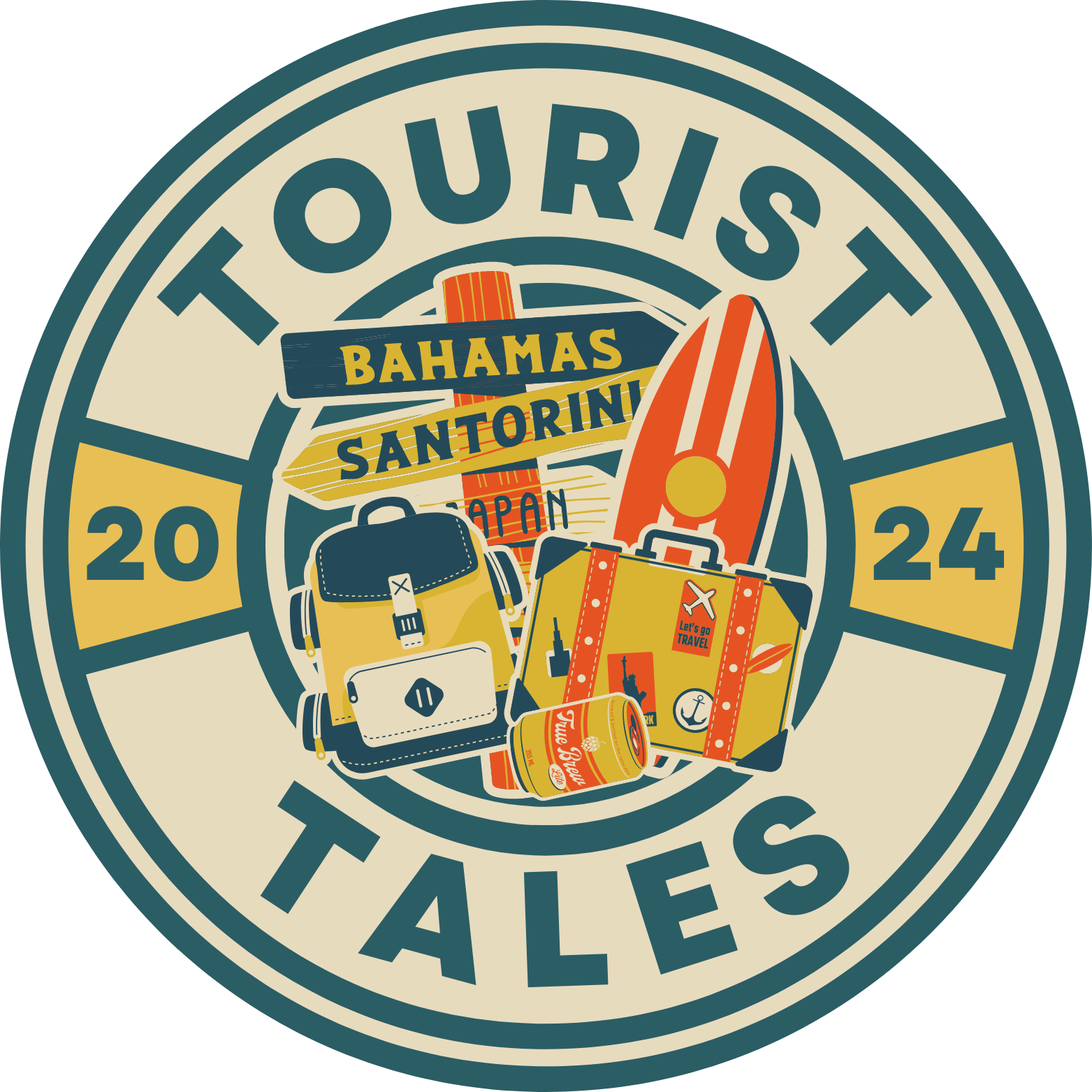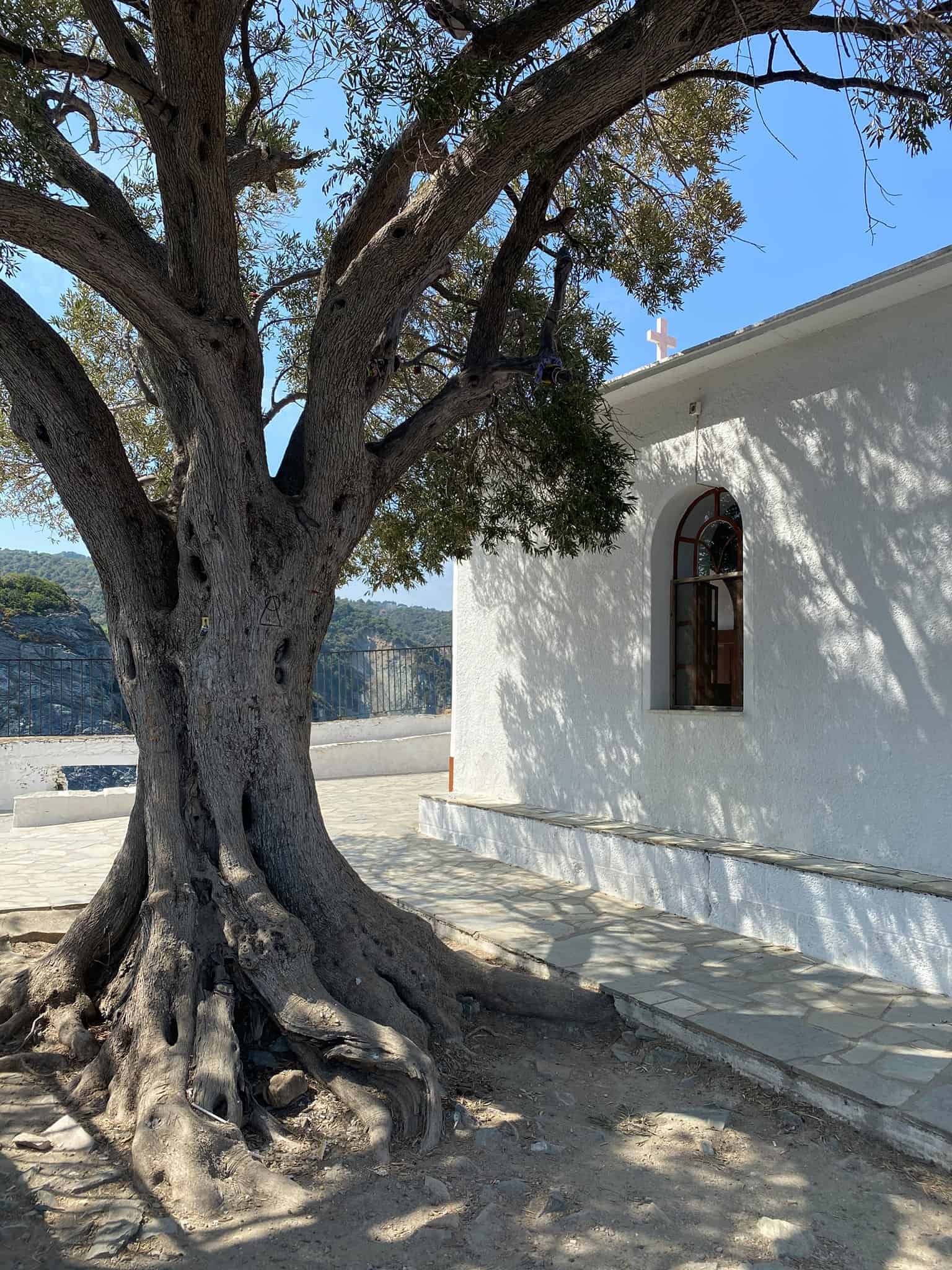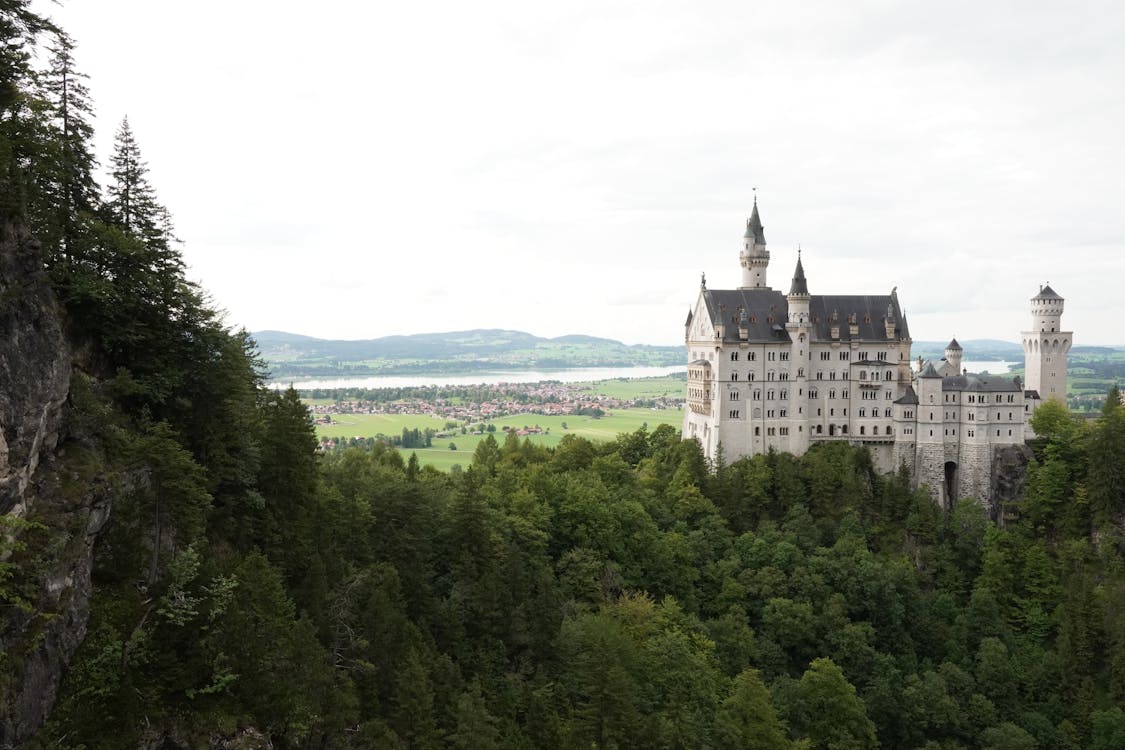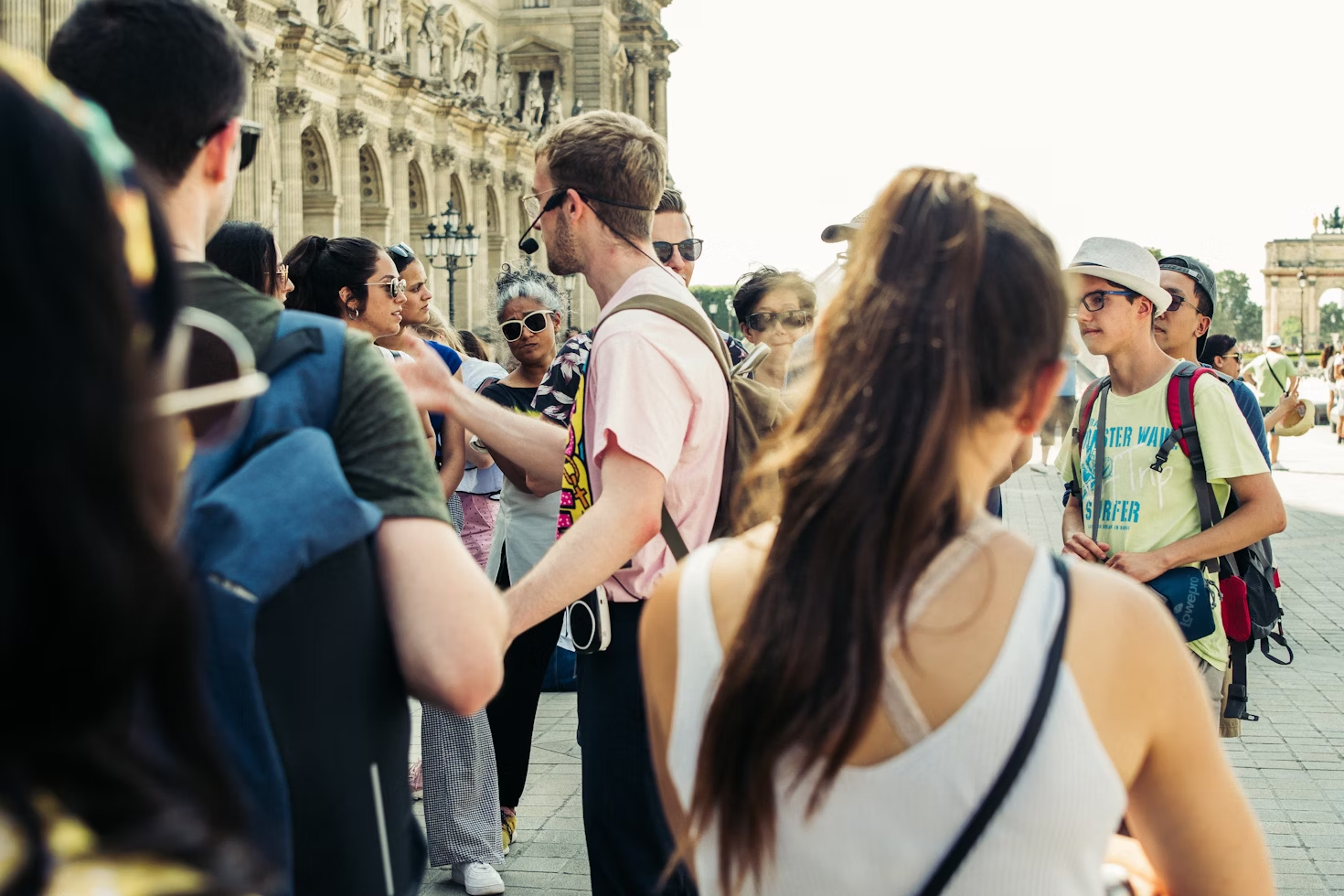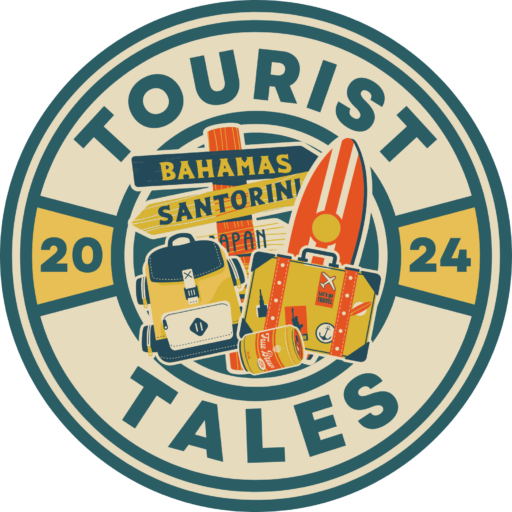When you mention famous landmarks in Greece, the first thing that comes to mind is probably the Acropolis of Athens. There are possibly also a selection of famous places that you have seen photographed in travel guidebooks for years but you are not quite sure where they are.
Whether you are travelling to Greece for an island-hopping adventure, or to immerse yourself in the country’s history and culture, it’s worth adding the below famous landmarks in Greece to your radar.
Famous Landmarks in Greece
The Acropolis of Athens
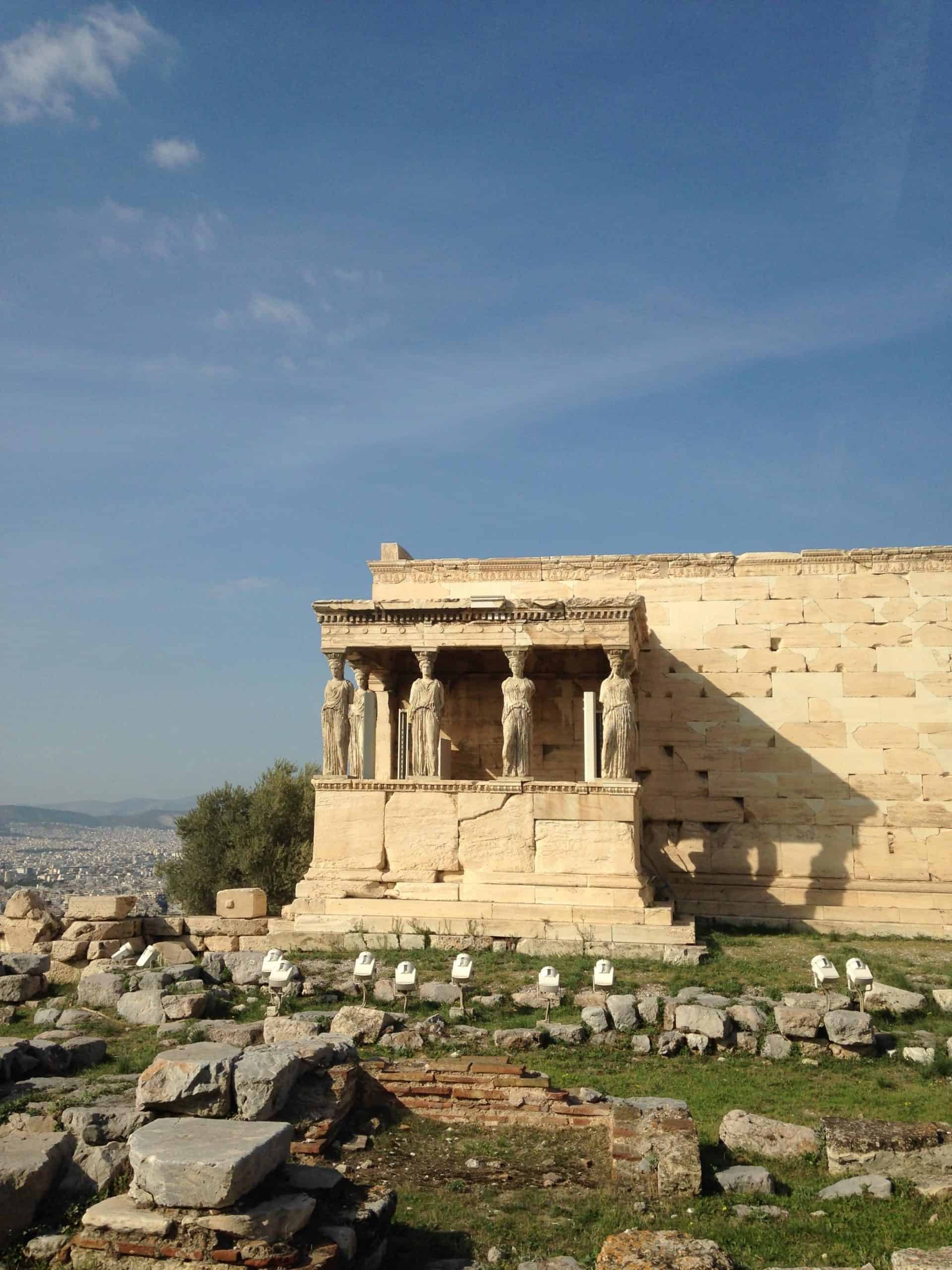
The Acropolis of Athens, without hesitation, is one of the most famous landmarks in Greece. This is the iconic image of Greece for most people.
The sun-bleached ruins of the ancient Parthenon sit atop a hill, watching protectively over the Greek capital as they have done for centuries. The site dates back to the 5th Century BC.
Once upon a time, every city in Greece had an Acropolis. Most of these sites were constructed for defensive purposes. However, the Acropolis in Athens was purely built for spiritual reasons.
The Athenian Acropolis was dedicated to the Goddess Athena, the patron Goddess of Athens. You might hear Acropolis and think of the Parthenon but the site is actually far more comprehensive than first meets the eye.
Various temples and religious structures are scattered around Acropolis Hill. Look out for the Erechtheion, the Pandroseion, the old Temple of Athena, and the Temple of Athena Nike.
No trip here is complete without a visit to the nearby ¨New¨ Acropolis Museum (Dionysiou Areopagitou 15). This is one of the best museums in Athens and it houses over 4,000 artifacts excavated from the region.
A visit here is a highlight of any Athens itinerary. You should dedicate at least 3-4 hours to exploring the Acropolis.
Hadrian’s Library
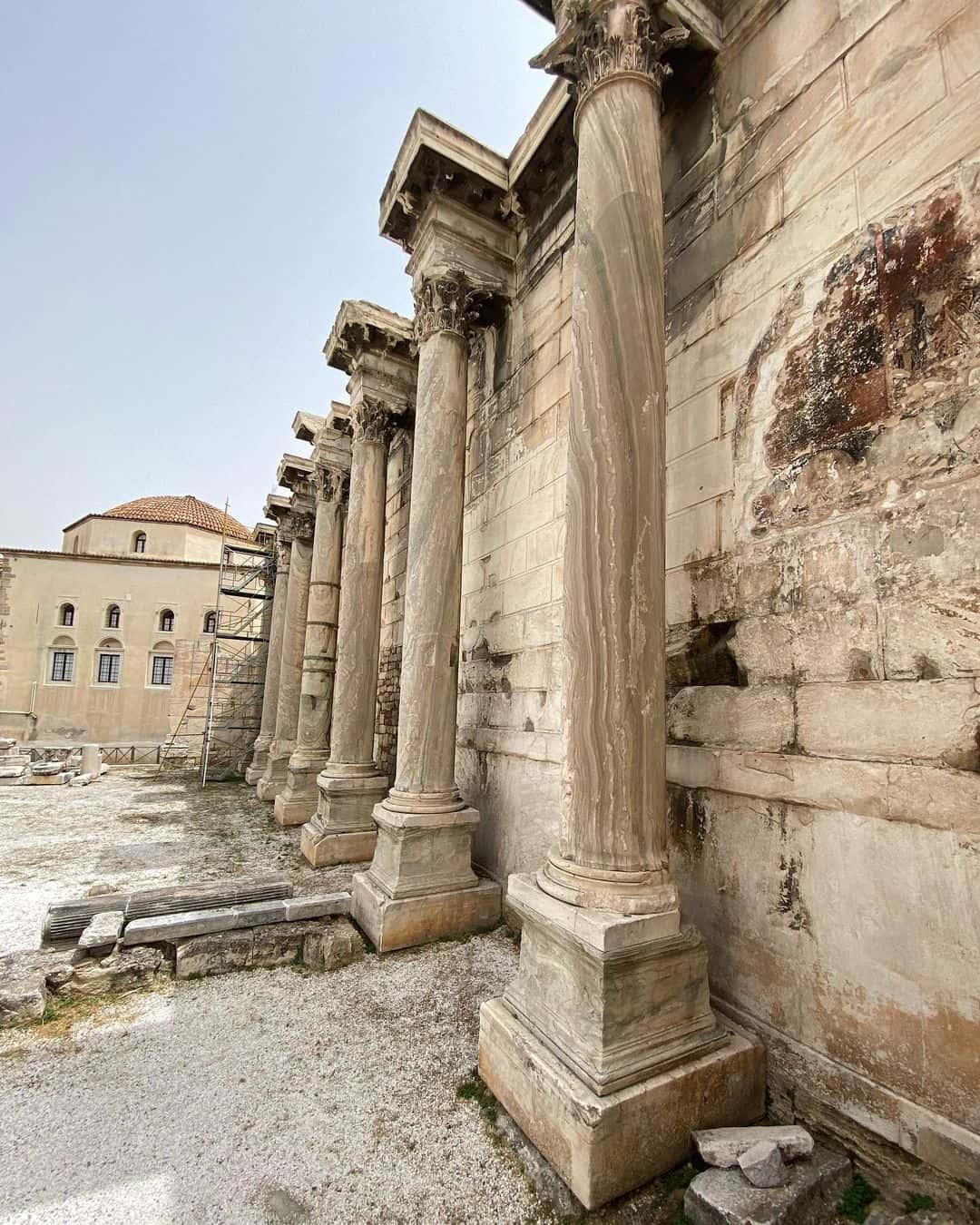
Hadrian’s Library is one of the most important historic sites in Athens. Its construction was ordered by the Roman Emperor Hadrian. He was a true Grecophile and arguably, one of the Greek capital’s biggest fans!
Even growing up in Italy before Hadrian set foot in Athens, he was given the nickname of “Graeculus” meaning “Little Greek”. He is responsible for the completion of several impressive architectural projects in Athens.
His library is a sprawling 10,000 square meter cultural complex that dates back to 132AD. It was more than ¨just¨ a regular library.
The site was made up of rooms where people could sit and listen to music, lecture halls, reading rooms, and rooms that contained some of the most important literature in Greece. Outside, there were beautiful gardens complete with ponds and flowerbeds.
Varvakios Agora, Athens
Varvakios Agora in Athens is the city’s main traditional marketplace. The covered market in Psiri dates back to 1886 and has been one of the most popular places to shop for meat, fish, and produce ever since.
Many Greeks prefer to shop here rather than in supermarkets and convenience stores as not only do they support independent producers and farmers but also because the quality of the products sold here is typically much better.
Visiting the market offers a great people watching opportunity. You can purchase a kilo or a half kilo of fresh fruit from the vendors here for very good prices.
Consider purchasing some strawberries, some rosy red cherries, or some incomparably sweet Greek oranges. If you happen to be in Athens during July and August, you will be around for watermelon season, and ice cold slices of Greek watermelon are not to be missed.
Mount Athos Monasteries, Halkidiki
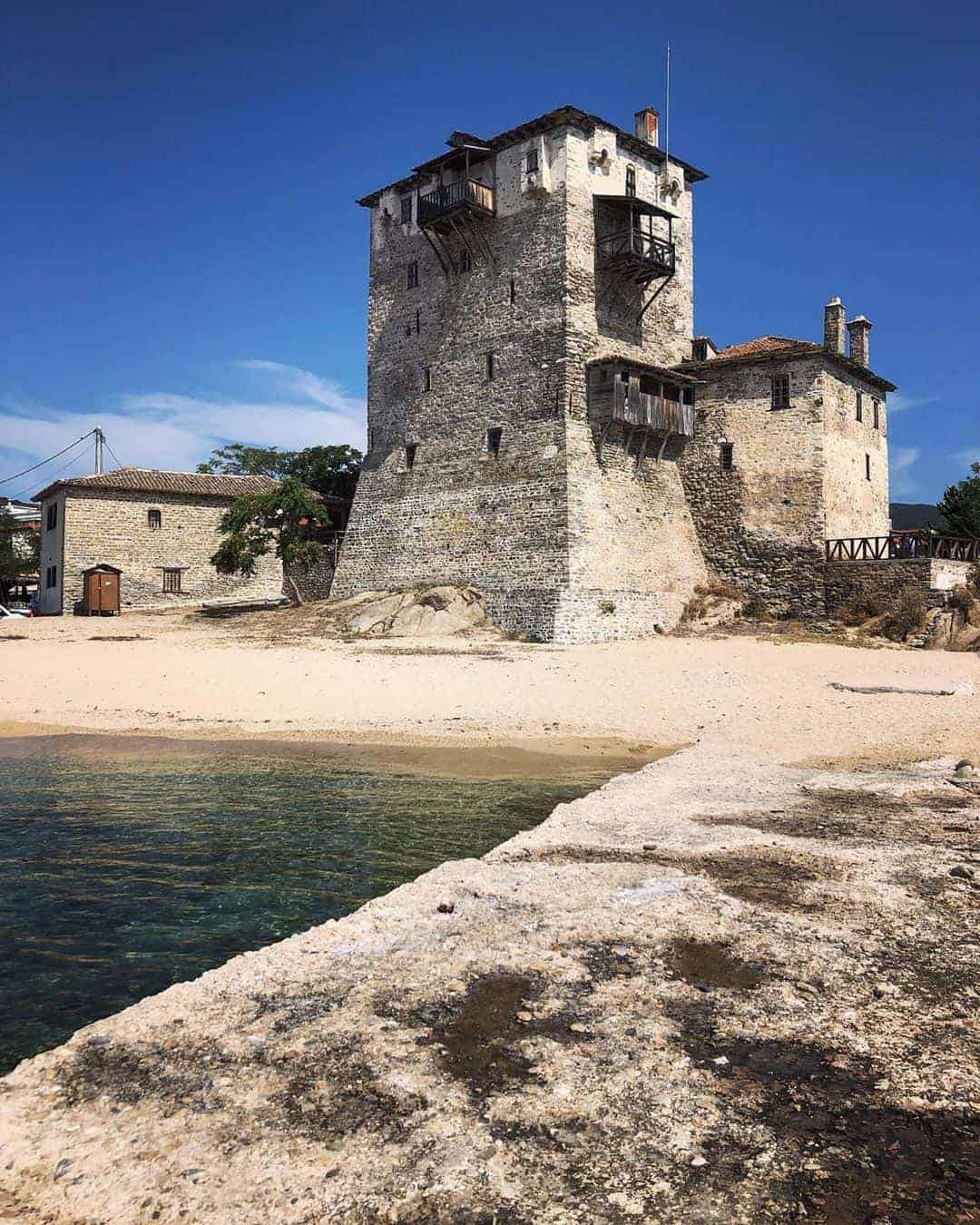
The Monasteries at Meteora are among the most famous religious buildings in Greece. However, unbeknown to a lot of people, they are not the largest monastic community in the country.
Mount Athos is the holy “leg” of the Halkidiki peninsula. Legend has it that the Virgin Mary herself once wandered along these shores and claimed Athos as her own.
This autonomous region consists of 20 monasteries and more than 2,000 monks. Each monastery is Orthodox.
However, they are all very different aesthetically and culturally. The Russian Monastery of Saint Panteleimon is particularly breathtaking.
Unfortunately, female travellers are not permitted to enter this holy land. Male travellers too will find it tricky to reach Athos as if they want to travel to the area, they need to obtain a permit which must be acquired in advance.
Numerous tour companies offer boat tours that sail around the area from Ouranoupoli. You can see the monasteries from the water and then you will continue on towards the gorgeous little island of Ammouliani.
The White Tower of Thessaloniki
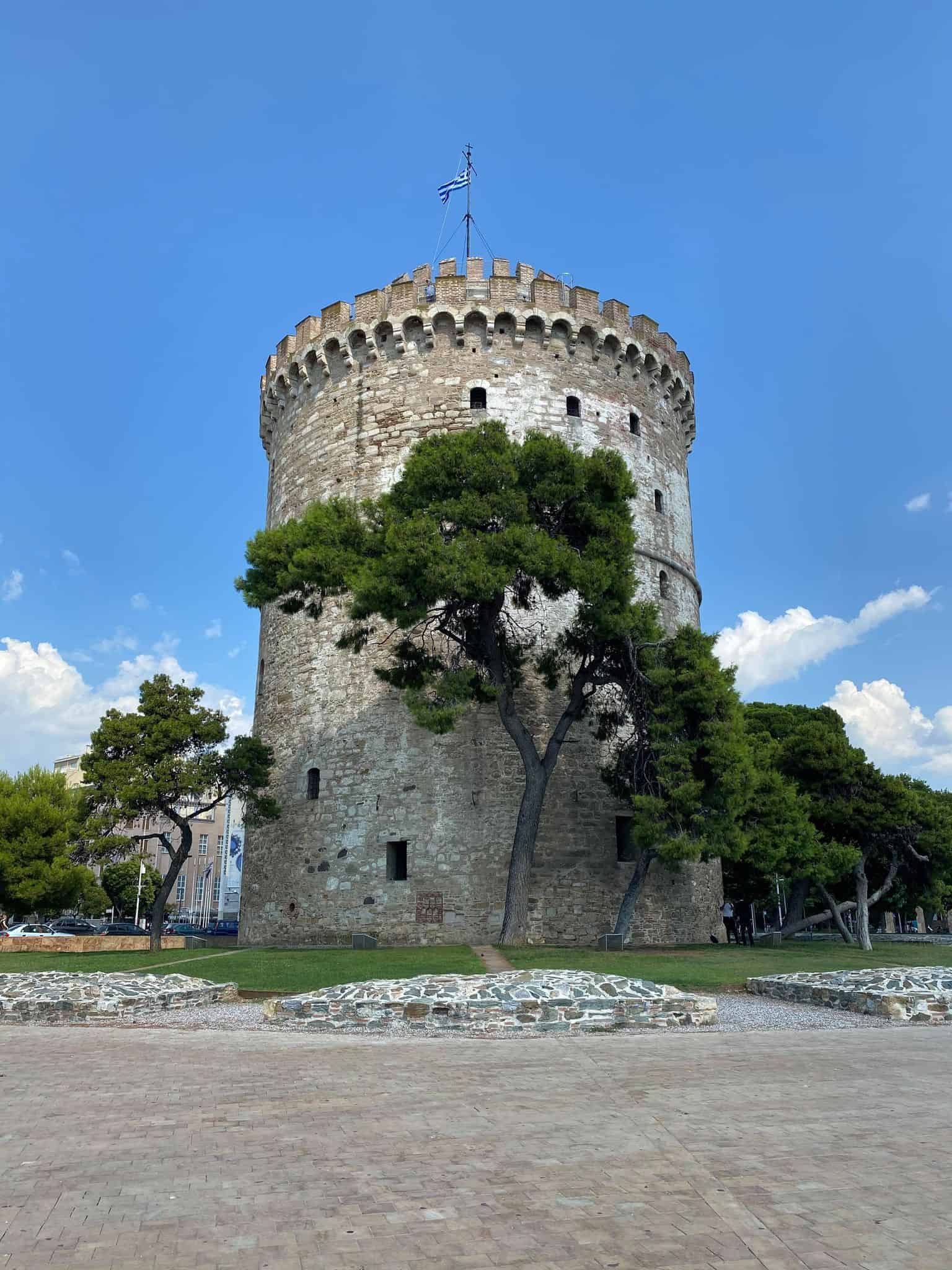
The White Tower of Thessaloniki is one of the most famous landmarks in Greece. It dates back to the 15th century. At this time, it was constructed on top of an old Byzantine fortification.
The tower has not always been white. At some points, it has had a rather sinister air about it.
At one point, the tower was used as a garrison. Another time, it was a prison.
Various tortures and executions took place at the White Tower during the Ottoman Era. This gained it the nickname as being “the tower of blood”.
Today, it houses a small museum that tells the history of Thessaloniki through the ages. From the top of the tower, you can enjoy unparalleled views over the Thermaic Gulf.
Agios Ioannis Kastri, Skopelos
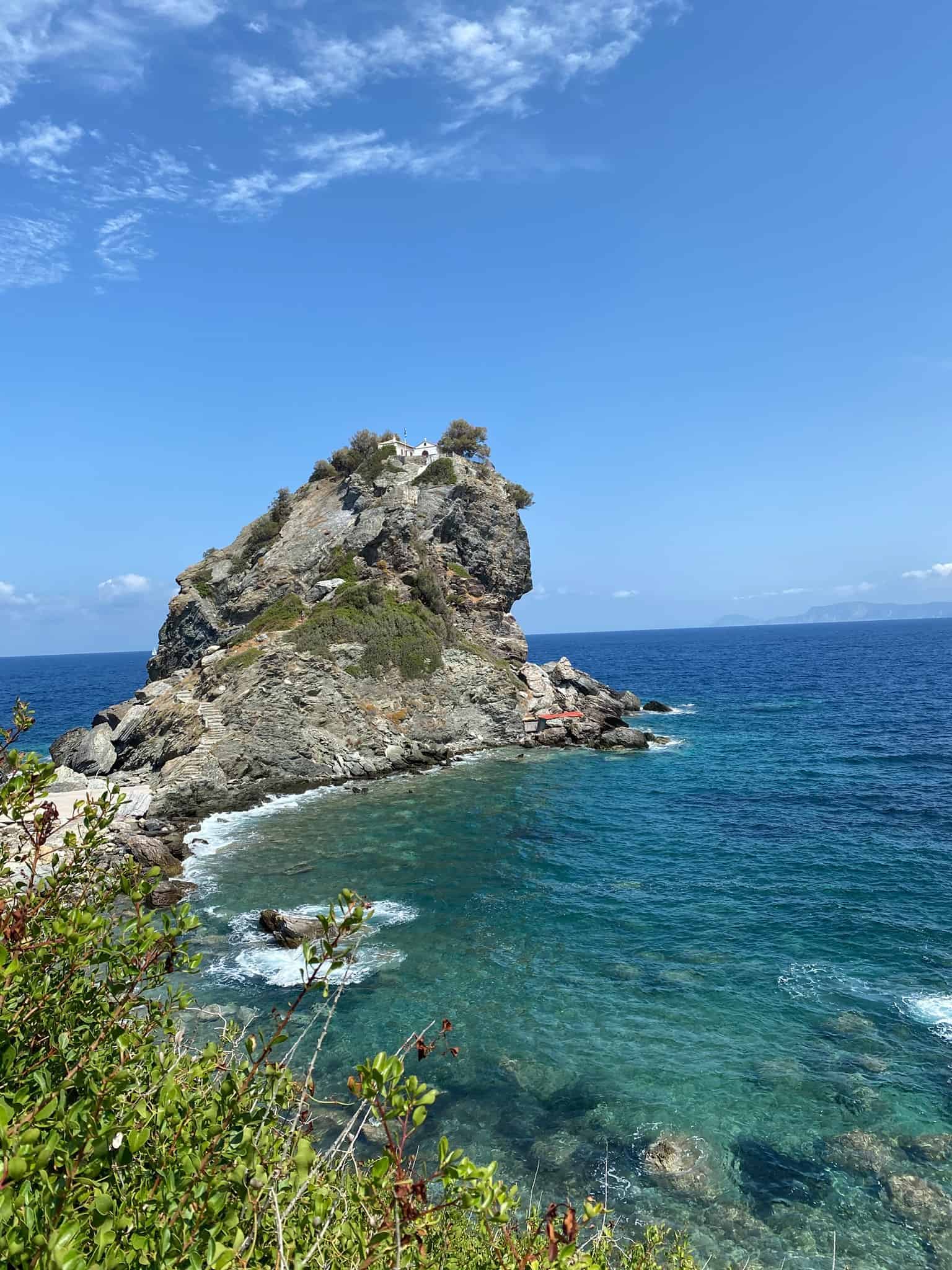
Agios Ioannis Kastri is a tiny, picturesque white-washed church that is perched precariously on top of a rocky cliff in Northern Skopelos. The church was made famous for appearing in the movie “Mamma Mia”.
Ascending the 200 or so steps to the church is not for the faint-hearted. The steep stone staircase has been weathered by time and the elements. Hold onto the handrails and tread carefully as the sea waves lap violently against the cliff.
The name “Agios Ioannis Kastri” means “St John on the Castle”. It is believed that a castle may have once stood here. This clifftop location would be a perfect location for a defensive structure to ward off pirates and invaders.
It is somewhat tricky to get here unless you are either on a Mamma Mia tour or you are renting a car in Greece. You can take a cab from Glossa, Northern Skopelos, and ask the driver to wait for you.
This should cost no more than around €25. The secluded cove nearby is one of the most beautiful Skopelos beaches.
The Panathenaic Stadium, Athens
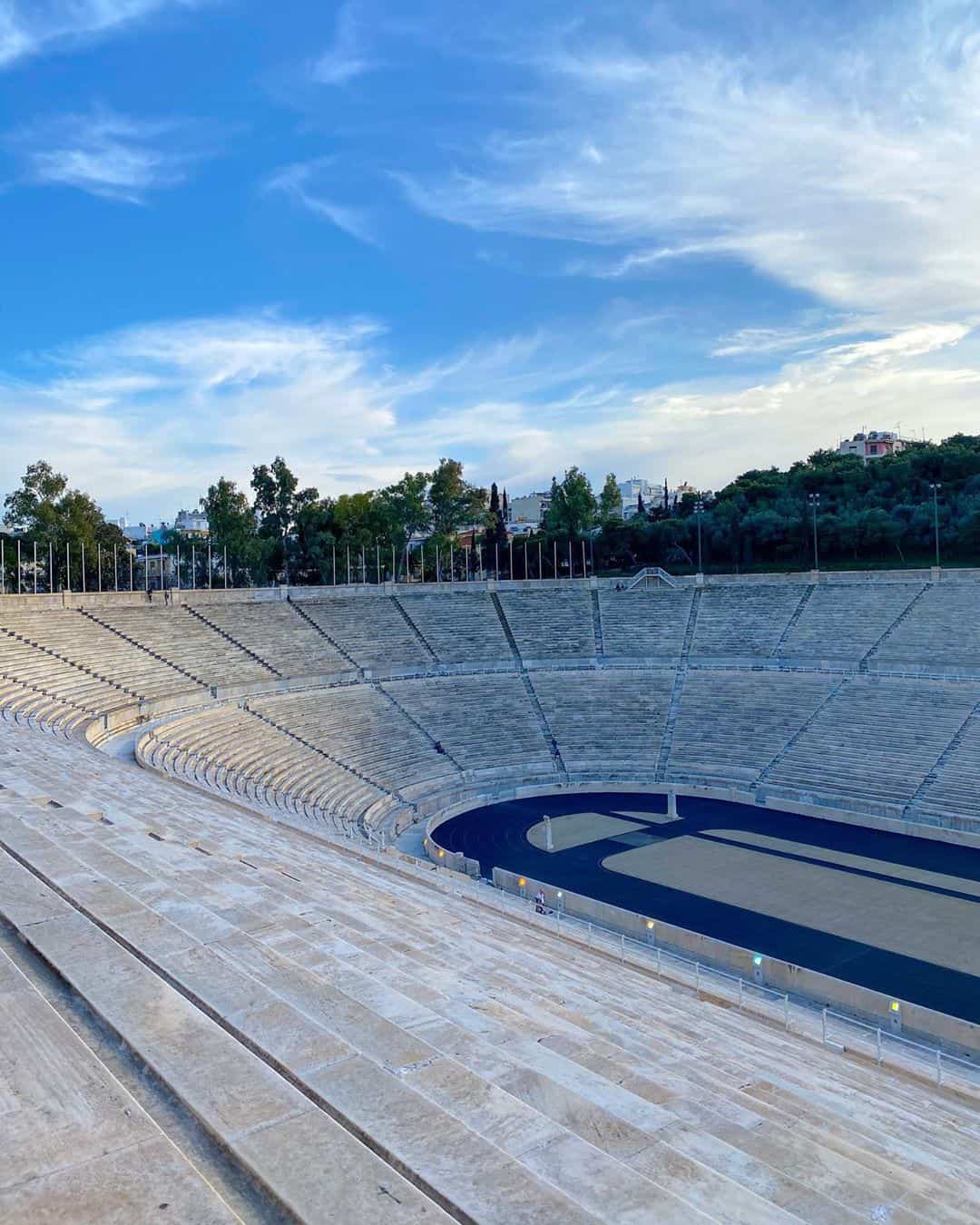
The Panathenaic Stadium is a sprawling 50,000-seater stadium that dates back to 330BC. This is the only stadium in the world that has been built entirely out of marble.
It was initially made out of wood, but it was upgraded to marble during the Roman occupation. Herodes Atticus rebuilt the stadium in 140AD using exquisite white marble sourced from Mount Penteli.
The very first Olympic Games were held here back in 1896. More than 80,000 Greeks attended the events. This was far more than the stadium’s capacity and many people were spilling out onto the streets.
Occasionally, concerts, and sporting and musical events are still hosted here. Check the online versions of Greek newspapers to see if there is anything interesting going on during the dates of your Greece itinerary.
Meteora Monasteries
The Meteora Monasteries are one of the most picture-perfect landmarks in Greece. The name “Meteora” means “suspended in the air”. This is a fitting title for a collection of monasteries that are seemingly balanced on cliff tops.
The first hermetic monks arrived at Meteora during the 9th and 10th centuries. They sought solitude and lived in the caves around the cliffs.
It was not until the 14th century that the first monastery, the Great Meteoron was built here. It was founded by monk Athanasios.
At one point, there were 24 monasteries in this region. Today, only six monasteries remain. There are a total of approximately 50 monks and nuns living at Meteora today.
It is easy to get from Thessaloniki to Meteora, or Athens to Meteora respectively. Direct trains run from both cities to the nearby town of Kalambaka.
Lake Pamvotida, Ioannina
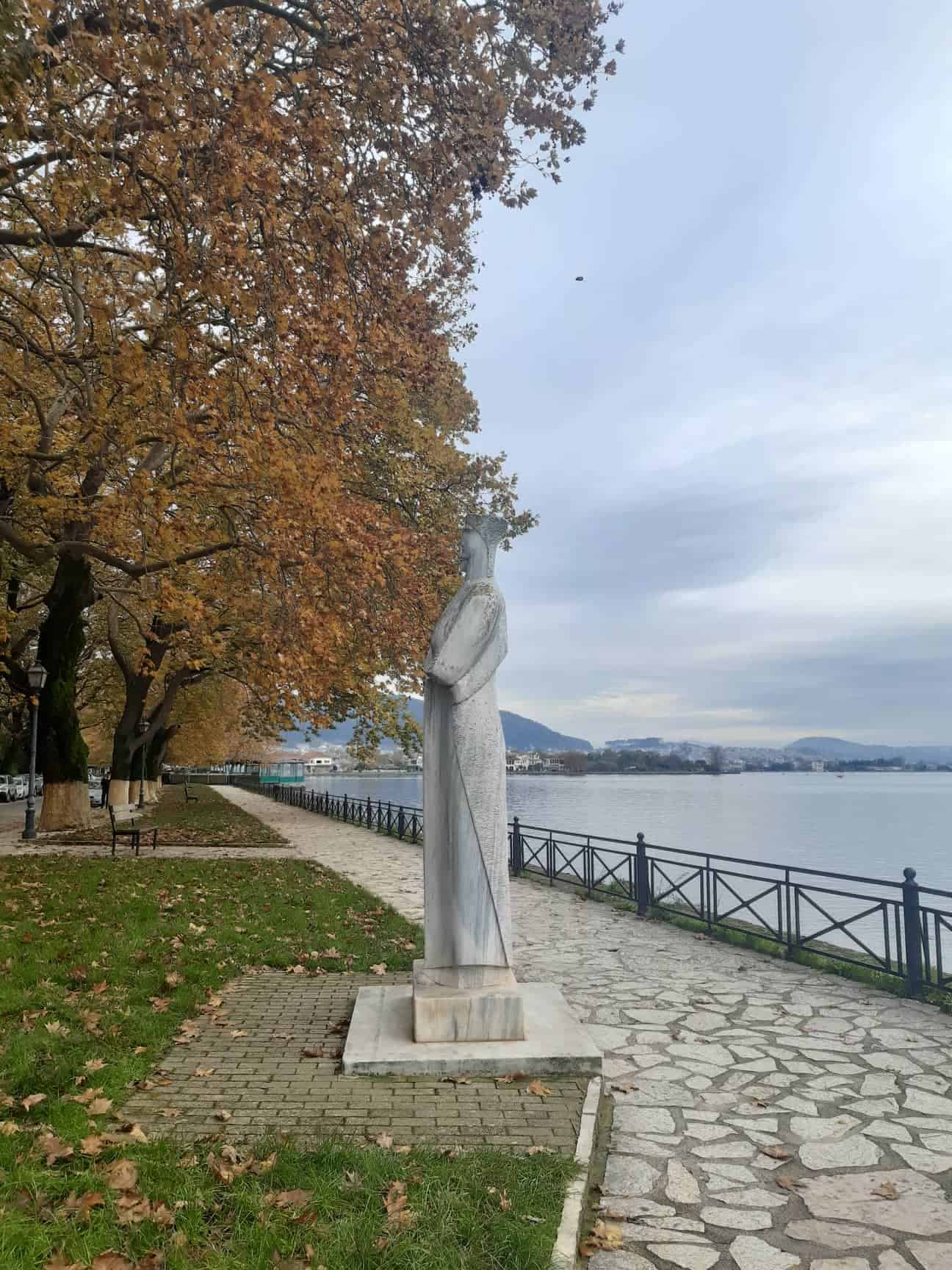
The Epirus capital of Ioannina may well be one of the most underrated travel destinations in Greece. This vibrant, leafy student city encompasses the scenic Lake Pamvotida.
A cobbled pathway lined with trees and contemporary art designs takes you on a journey around the circumference of the lake. This lakeside walk is popular among locals as they embark on their morning jogs or walk their dogs.
The path that runs beside Lake Pamvotida takes you all the way from Parko Katsari to Perama and other northern villages. Today, the lake is peaceful and serene.
However, that was not always the case. Lake Pamvotida has an eerie and sinister past. During the Ottoman era and the days of Ali Pasha, traitors and adulteresses would be drowned in the lake. Weights would be tied to their ankles to prohibit their escape…
Lalaria Beach, Skiathos
In recent decades, Skiathos has soared in popularity to become one of the best-loved Greek islands. One reason for this? The breathtaking natural scenery of Lalaria beach.
Lalaria is recognised time and again for being one of the best beaches in Skiathos and all of Greece. It awaits in the island´s northeastern corner and can only be accessed by boat. During the summer months, services run regularly between Skiathos town and Lalaria.
Lalaria is characterised by powdery white sand, dramatic white cliffs that form a natural archway, and its crystal-clear turquoise waters. The unique scenery here cannot be compared to anything else in the Mediterranean.
The Bridge of Arta
The bridge of Arta is an arched stone bridge that runs over the river Arachthos. It sits in the Epirus region of Central Greece. The bridge can be found a short distance away from the road that connects the city of Arta with Ioannina.
The bridge of Arta may not be incredibly well-known internationally. However, show a photo of it to any Greek and they will automatically be able to tell you where it is.
Greek legends tell the story of Ottoman Turks in Greece asking for the assistance of locals to construct a bridge over the Arachthos River. Every day, a team of Greek construction workers would work on the bridge, and every night they would destroy it.
When the Turkish Commanders inquired about the constant collapse of the bridge and problems with construction, the Greeks answered that it was haunted! Today, the Folklore Museum of Arta sits on one side of the bridge, and the imposing plane tree of Ali Pasha Tepelenli on the other.
The exact construction date of the bridge is unknown. It is believed that its current form was built sometime between 1612 and 1615 AD.
However, ancient foundations also stand here. They indicate that the first bridge to be built here was constructed in the 3rd century BC.
Anafiotika Athens
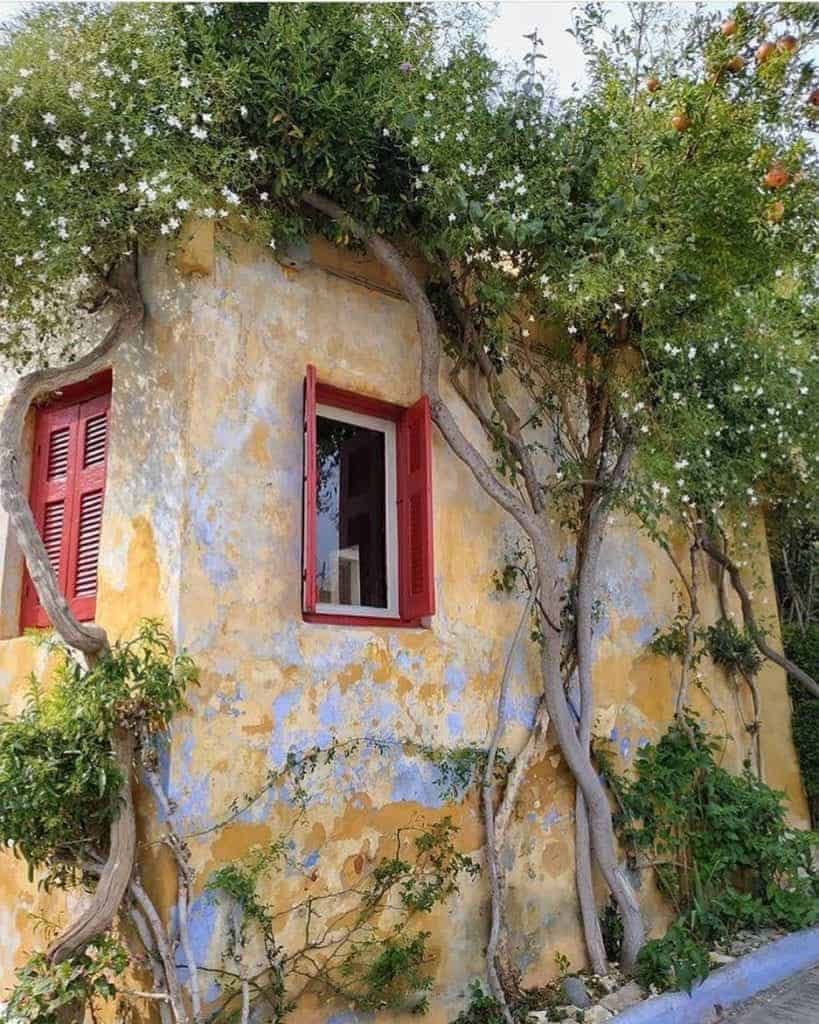
Anafiotika is a quaint Athenian neighbourhood that looks more like something that you would expect to see on a Cycladic island than in the heart of the Greek capital. The district was built by residents of the island of Anafi.
In 1821, Greece finally obtained its independence from Turkey. In the years that followed, skilled builders and construction workers travelled from their islands and villages to Athens.
They were requested to do so as part of a huge rebuilding and renovation effort ordered by King Otto I. The people that moved from Anafi built their homes in a style that reminded them of their island.
Indeed, the name ¨Anafiotika” means ¨little Anafi¨. Today, this is one of the most charming and lesser-known spots in Athens.
Proussos Monastery, Evritania
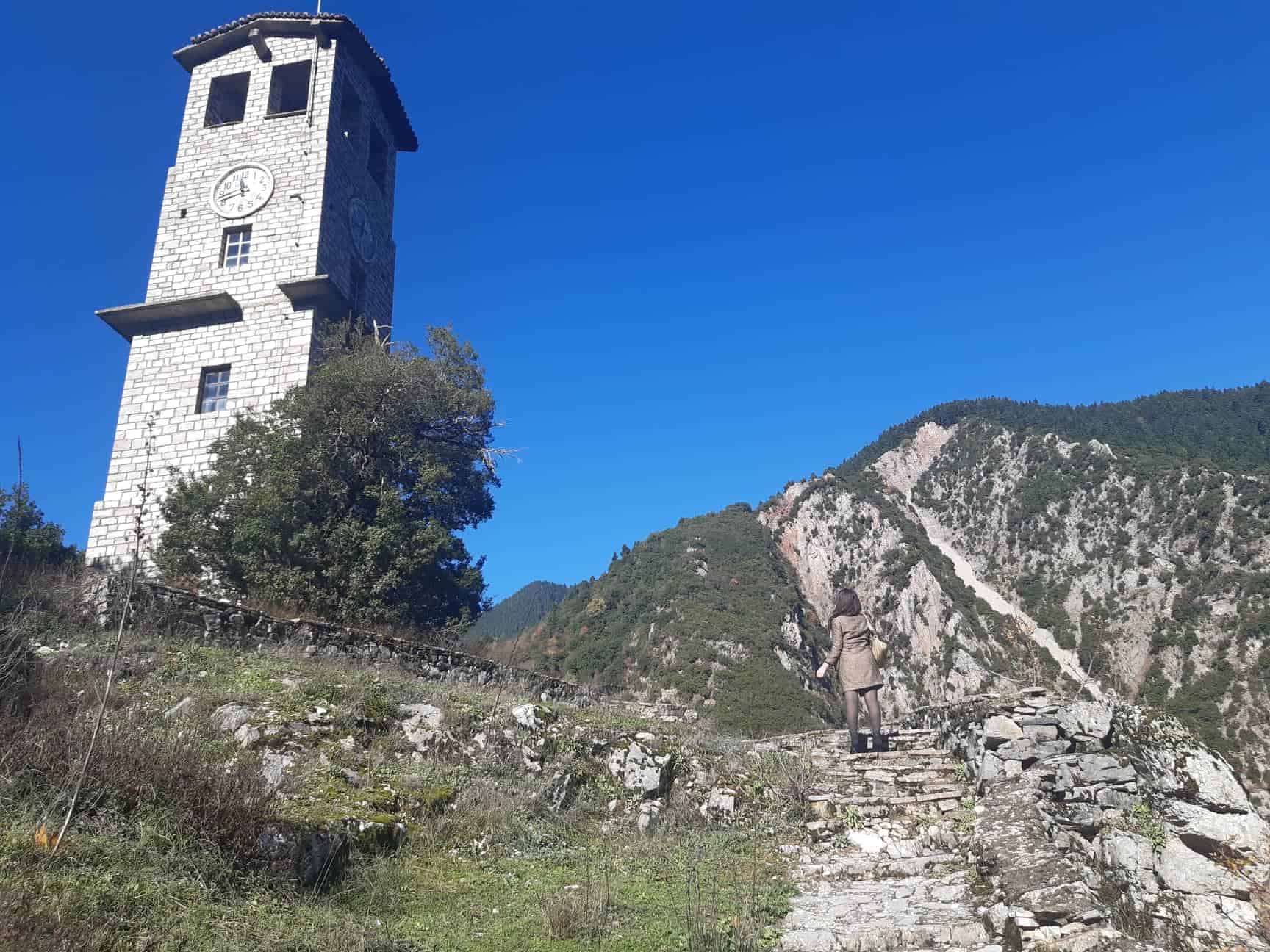
Proussos Monastery in Evritania, Central Greece is one of the most important monasteries in the country. Yet whenever you travel here, you will never see the site crowded. Few international tourists even know of Proussos’ existence.
It is believed that the monastery was built at some point between the 12th and 14th centuries. This is a broad period. However, no one knows for certain when the monastery was constructed.
Greek soldiers rested here during the War of Independence. The monastery is dedicated to the Virgin Mary and as such, thousands of pilgrims trek here every year on the 15th of August to celebrate dormition day.
Koukounaries Beach, Skiathos
Koukounaries beach in Skiathos is not only considered as being one of the very best beaches in Skiathos, but it is also considered one of the best beaches in the world! When you see it, you realise it is not hard to understand why.
Koukounaries is a long, sandy beach. It is encompassed by dense pine forests, creating something of a ¨paradise lost” kind of atmosphere.
During the summer months, this is also one of Skiathos’ most popular coastal areas. The sand is filled with sun beds and tourists. However, Koukounaries is so beautiful, that you can’t help but forgive it.
Mount Olympus
Mount Olympus is Greece’s tallest mountain. This is a popular day trip from Thessaloniki for those who love immersing themselves in nature and the great outdoors.
The hike to the highest peak of Mystikas (2918m) is one of the most challenging hiking trails in Greece. However, there are many trails around the foothills of Olympus that are suited for all ages and abilities. Some of these routes also lead to relaxing natural thermal baths.
Mount Olympus also has strong links with Greek mythology. Zeus and the other 12 Olympian Gods would sit up here and decide the fates of mortals.
Dramatic Roads of Karpenisi, Evritania
Karpenisi is the capital of the Evritania region of Greece. This area is affectionately referred to as ¨The Switzerland of Greece¨ on account of its dramatic scenery, rolling green hills, and terrifying mountain roads that hug cliff faces.
The charming villages, gorgeous monasteries, and scenic hiking trails are all major draws of visiting Karpenisi. However, one ¨wow” factor is experienced by simply driving around the Evritania region and having your breath taken away by the scenery.
You will find many places where you can simply stop at the side of the road and take photos. This is arguably one of the most beautiful places in mainland Greece.
Sarakiniko, Milos
If you are looking for a Greek beach with scenery that is surreal, ethereal, and otherworldly, Sarakiniko is it. The beach has a more lunar-like landscape than what you would typically find in the Cyclades.
Sarakiniko consists of greyish-white volcanic rock. In some ways, you could compare Sarakiniko to Pamukkale, Turkey.
Time, winds, and the elements have worn away at the rocks. Today, this has created strange, sinuous shapes.
The area is huge and consists of valleys, hidden caves, towering white cliffs that you can dive from into the sea, and mysterious tunnels. The waters that border Sarakiniko are the perfect shade of clear blue. Better yet, there is a shipwreck beneath the surface that you can explore if you are into diving.
Monemvasia
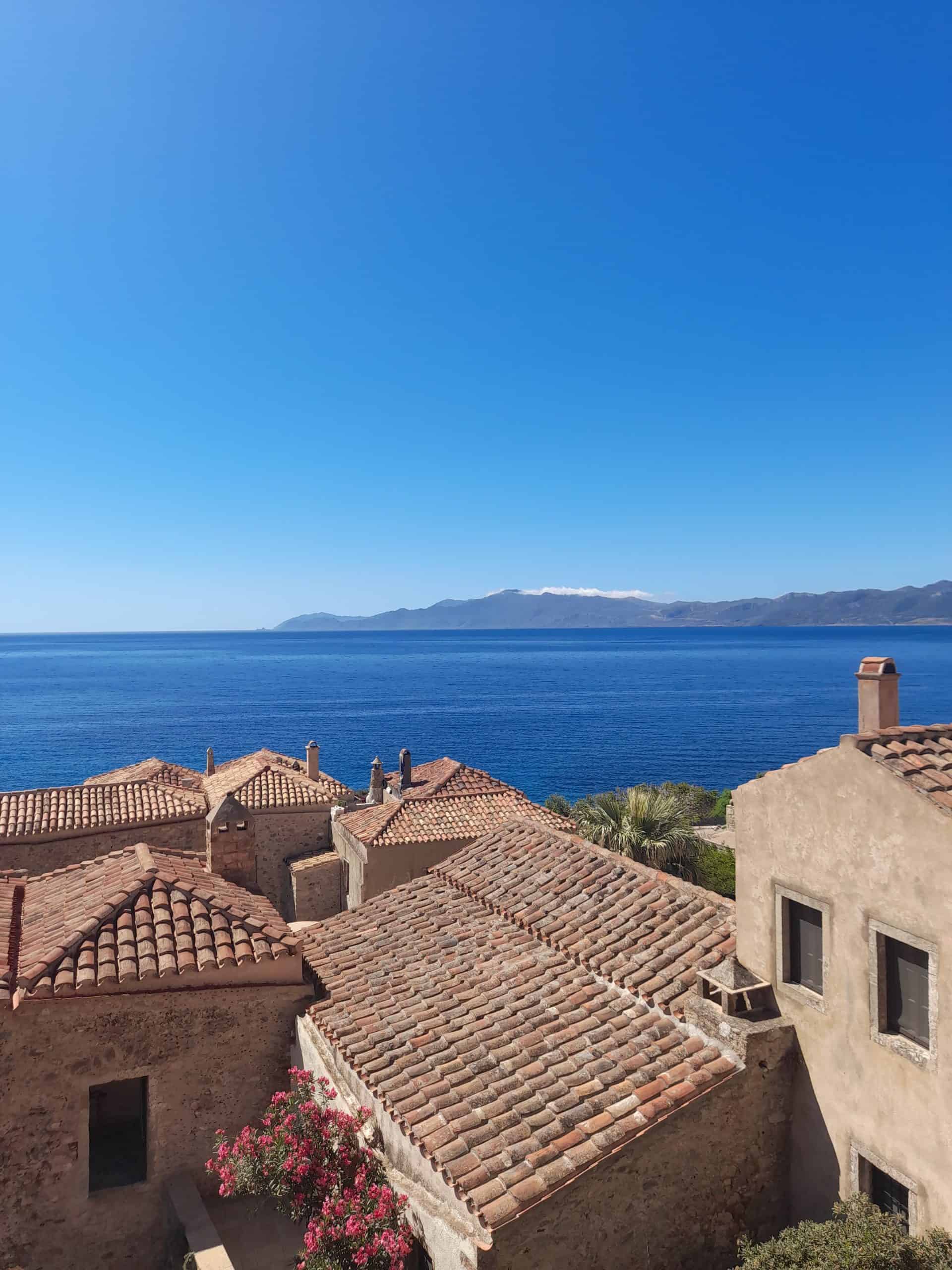
Little Monemvasia is a medieval castle town in the Peloponnese region of western Greece. Sure, there are several medieval settlements and ruins scattered throughout the country. Yet few are as well-preserved and seemingly frozen in time as Monemvasia.
The town´s dramatic castle was carved into the slopes of the rocks. It is surrounded by sprawling mansions, many of which have now been converted into hotels and restaurants.
Despite a few improvements and renovations here and there, little has changed in Monemvasia since the Medieval era. Stroll through the narrow streets, admire the frescoes in the Byzantine churches of Agia Sofia and Christ Elkomenos, and revel in the views from the top of the castle.
There are several excellent beaches in the area. Whether you are looking for something secluded, or with all the amenities, there is a beach perfect for you. Pori, Xifias, Pera Kakavos, and Mandraki are some of the best-loved coastlines.
Mount Lycabettus, Athens
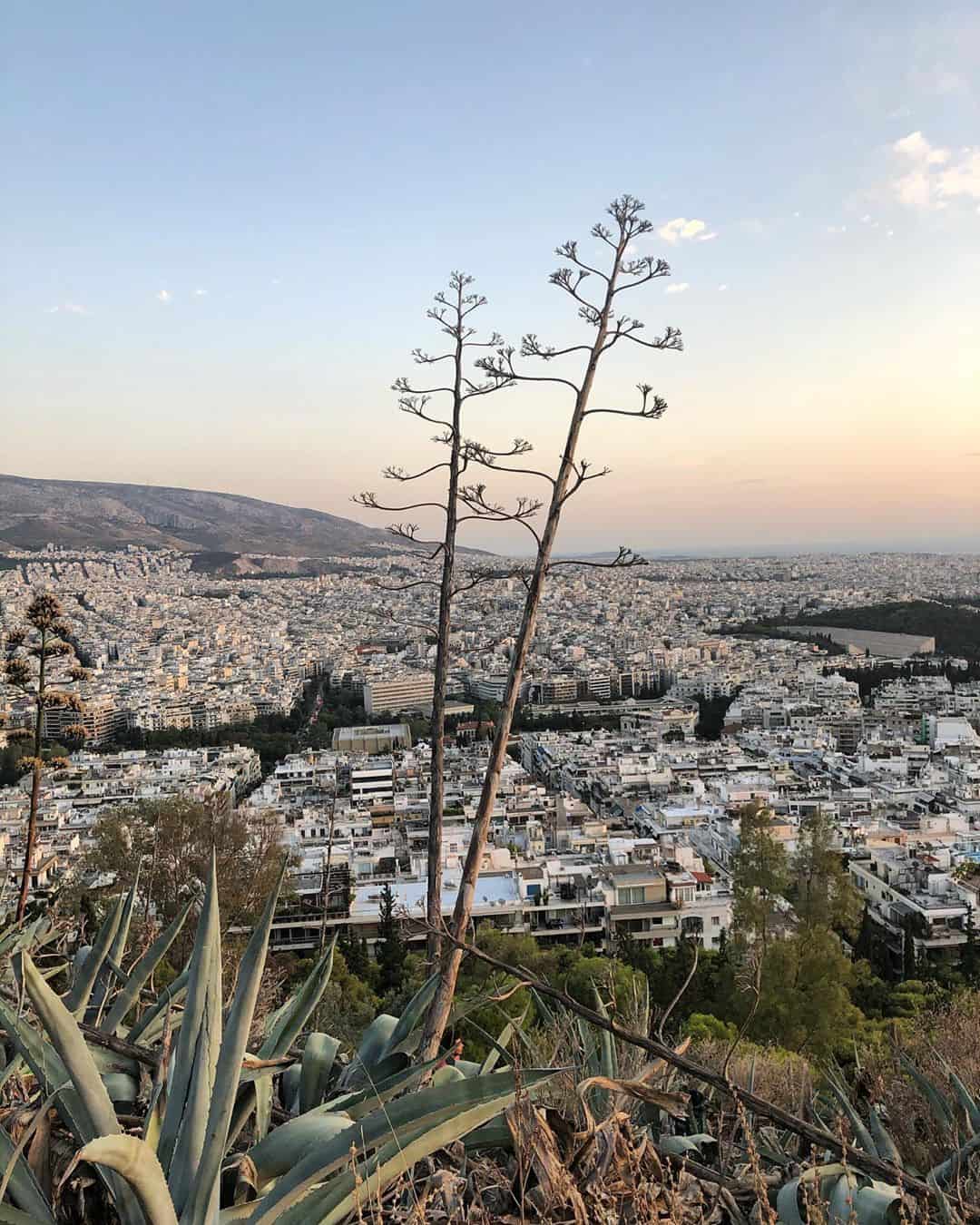
Mount Lycabettus in Athens sits parallel to Acropolis hill. It is visible from virtually all points of the city.
The slopes of Lycabettus are filled with dense green woodlands and flower gardens. They offer a sense of respite and escapism from the chaotic concrete jungle of downtown Athens.
Several walking trails weave through the foothills of Lycabettus, offering one of the best opportunities for urban hikes in Athens. The paths are well-paved and suitable for people of all ages and hiking abilities.
However, if you prefer not to walk, you can also ride the funicular to the top for just a few euros. The quaint little whitewashed 19th-century church of Agios Georgios awaits at the top of the hill, along with a flagpole sporting a giant Greek flag.
Step inside the church and admire the religious icons and paintings inside. For a few cents, you can light a candle in memory of loved ones you have lost.
The views of Athens from up here are some of the best in the city. On a clear day, you can see all the way out to the port at Piraeus, and the Saronic Islands from the top.
The Temple of Poseidon, Sounion
Cape Sounion awaits at the southernmost tip of mainland Greece. Its most famous landmark, the Temple of Poseidon, is a popular day-trip destination from Athens.
The Temple of Poseidon was constructed in honour of Poseidon, God of the Sea. It was built in 444 BC – the same year as the Parthenon.
A bustling town once surrounded the temple site. Today, all that remains are the outer walls of a few ruined houses and defensive structures.
In Ancient Greece, this was one of the most important ports in the country. It is said that travelling Merchants would know they were on the approach to home when they saw the pillars of the Temple of Sounion glistening on the horizon.
In Greek mythology, there is a very sad story that surrounds the Temple of Poseidon. It is said that King Aegeus of Athens was waiting here for his son Theseus to return from fighting the minotaur at the labyrinth at Knossos, Crete.
Theseus had told his father that he would display white sails on the ship if he was successful in defeating the minotaur. If he were to fail and die, his crew would sail back with black sails.
After getting caught up in the excitement of defeating the minotaur, Theseus and his crew completely forgot about the sails. They sailed back towards Athens with black sails fluttering in the wind. Aegeus, assuming his son had died and overcome with grief, leaped to his death in the Aegean Sea.
Syntagma Square, Athens
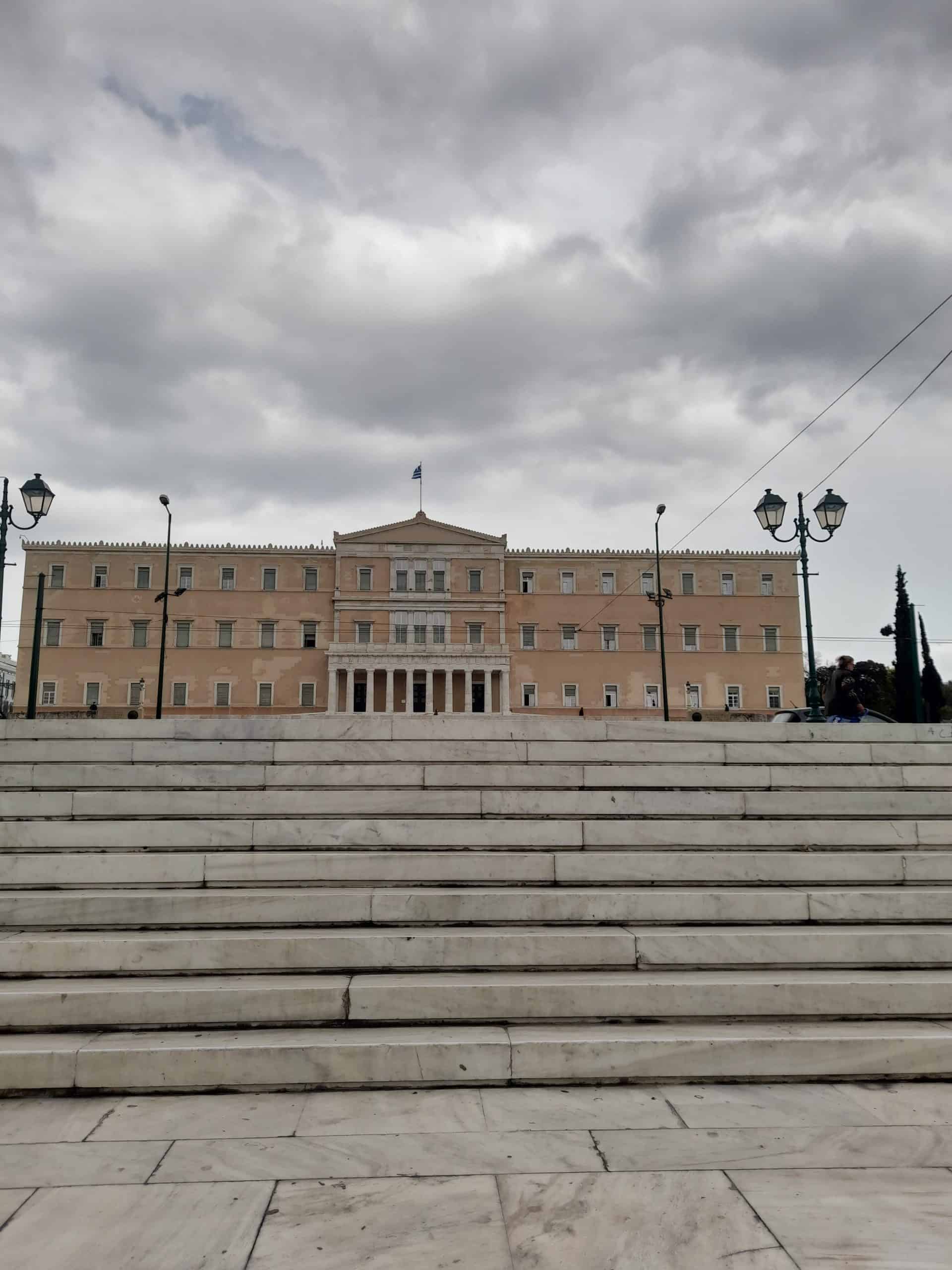
Syntagma is the main central square in Athens. It is the second-largest square in the country (the first being Spianada Square in Corfu).
A number of notable historical buildings encircle Syntagma. Most notably, the pale yellow Parliament building where you can watch the Evzones perform their changing of the guards’ ceremony.
The square dates back to 1834 when Athens had recently been designated as the new capital of Greece. Originally, it was named ¨Palace Square¨ because the Greek Parliament building, which was then a palace, sat directly opposite it.
In 1843, it was renamed Syntagma Square which means ¨constitution square¨. This name came as a result of the constitution that King Otto was required to provide his people following the national uprising in 1843
Various festivities and events are hosted in Syntagma throughout the year. At Christmas time, a huge Christmas tree is placed here, and festive performances and Christmas markets are hosted around it.
Delos, The Cyclades
The uninhabited island of Delos is perhaps one of the most mysterious of the Cyclades islands. This was supposedly the birthplace of the God Apollo and the Goddess Artemis.
Since such prominent Greek Gods were born here, the island was rendered sacred and no human was permitted to be born or die on the island. Today, Delos is a UNESCO world heritage site.
It was inscribed as such in 1990 and today is one of 18 UNESCO sites in Greece.
You can visit the island of Delos on a day trip from Naxos, Mykonos or Santorini. The treacherous seas and the rocky boat ride that you need to endure to reach Delos only add to the air of mystery that enshrouds the island.
The ruins at Delos are well-preserved. Stroll down colonnaded walkways as the Ancient Greeks would have done years ago, and marvel at what remains of crumbling old temples.
Temple of Olympian Zeus, Athens
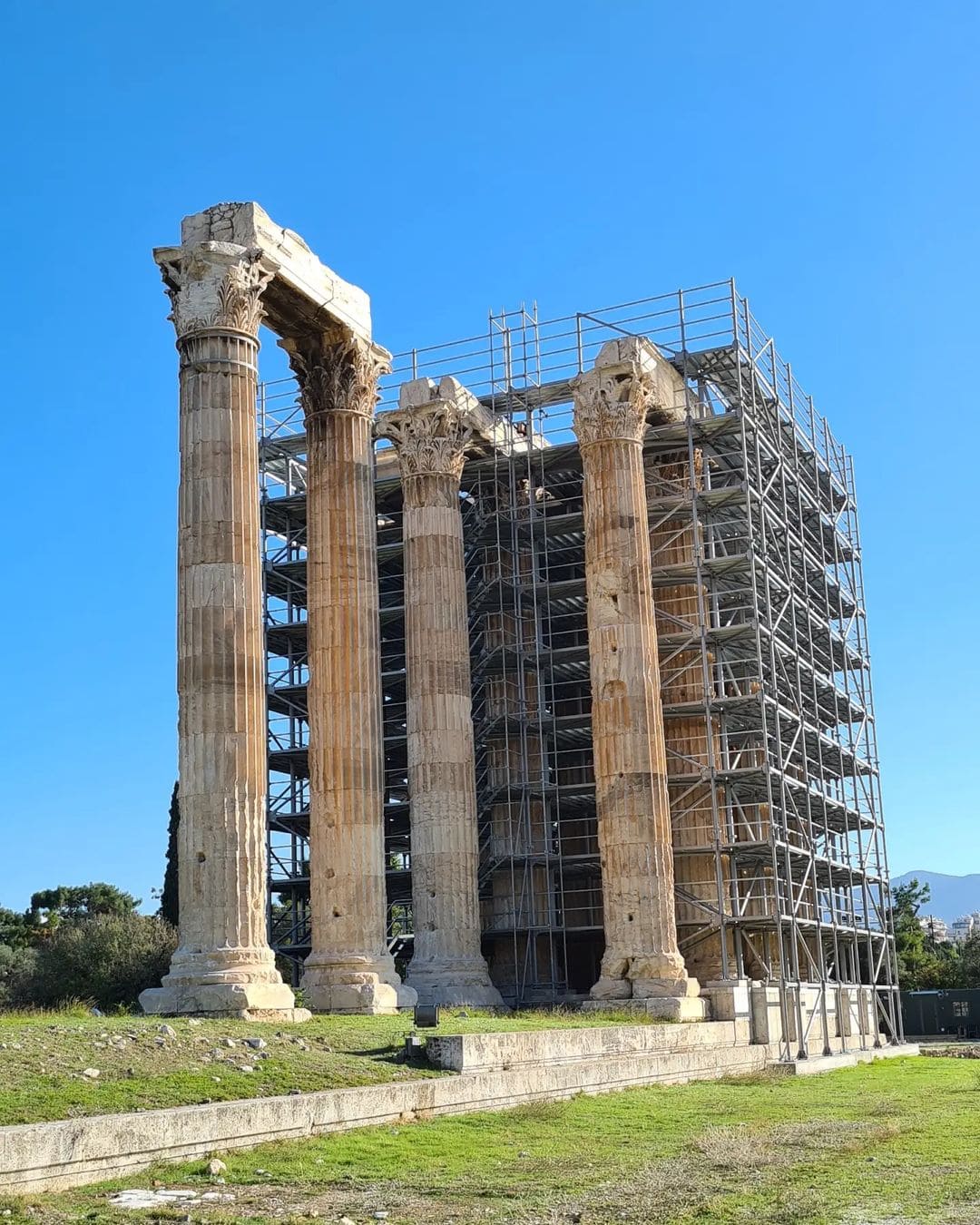
The Temple of Olympian Zeus is what remains of a temple built in dedication to Zeus, the chief of the Olympian gods. Construction on the temple began in the 6th century.
At this time, Architects Antistates, Callaeschrus, Antimachides, and Porinus were given responsibility for the designs. The temple was not completed and for reasons unknown, it was left abandoned and forgotten.
Various Athenians and architects would pick up and then abandon the project in the centuries that followed. In all, the temple took over 638 years to build!
It was Emperor Hadrian that finally finalised work on it in 131 AD. In its complete form, there were 104 spectacular Corinthian columns, each of which was 17 meters in height and carved with intricate designs.
Although the temple was dedicated to the Greek God Zeus, it was just as much an egotistical endeavor for Hadrian. He decorated the site with dozens of stone and bronze statues of himself!
Today, some of these are on display in the Athens Archeological Museum. Today, only a few of the 104 pillars remain.
However, it does not take much imagination to envisage the grandeur that this place once held. The sad thing is that the temple took so many centuries to build and then it was actually only used for a couple of decades after its completion.
The Temple of Olympian Zeus sits opposite the National Gardens. From here it is just a short walk to Dionysiou Areopagitou street, the Acropolis, Koukaki, and Syntagma.
Cape Amarandos, Skopelos
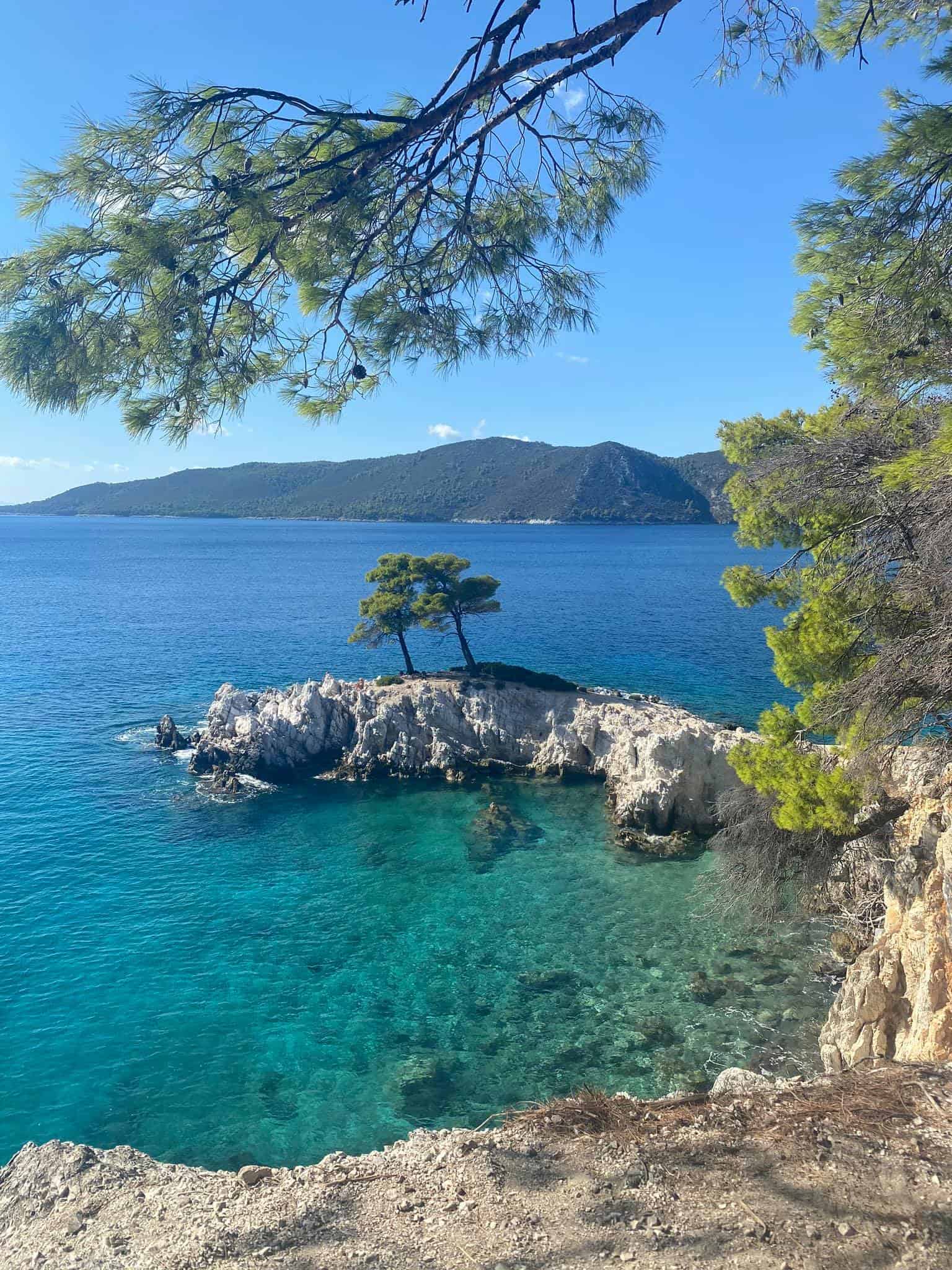
Amarandos Cove is a rocky cape that you see photographed on hundreds of postcards of the Sporades. The cove consists of two curved pine trees that embrace the ocean.
Although Amarandos is not a beach per se, it is one of the best places for swimming on Skopelos island. You can follow a dirt trail from the hamlet of Agnontas down to Cape Amarandos. There are various footpaths that lead you away from the trail towards the sea where you will find hidden rock pools and secret stretches of coastline.
The waters at Cape Amarandos are so clear that the locals label this place “piscina”. It is not a serviced beach, and there are no amenities nearby. This only adds to the castaway/desert island paradise vibes.
Ancient Agora, Athens
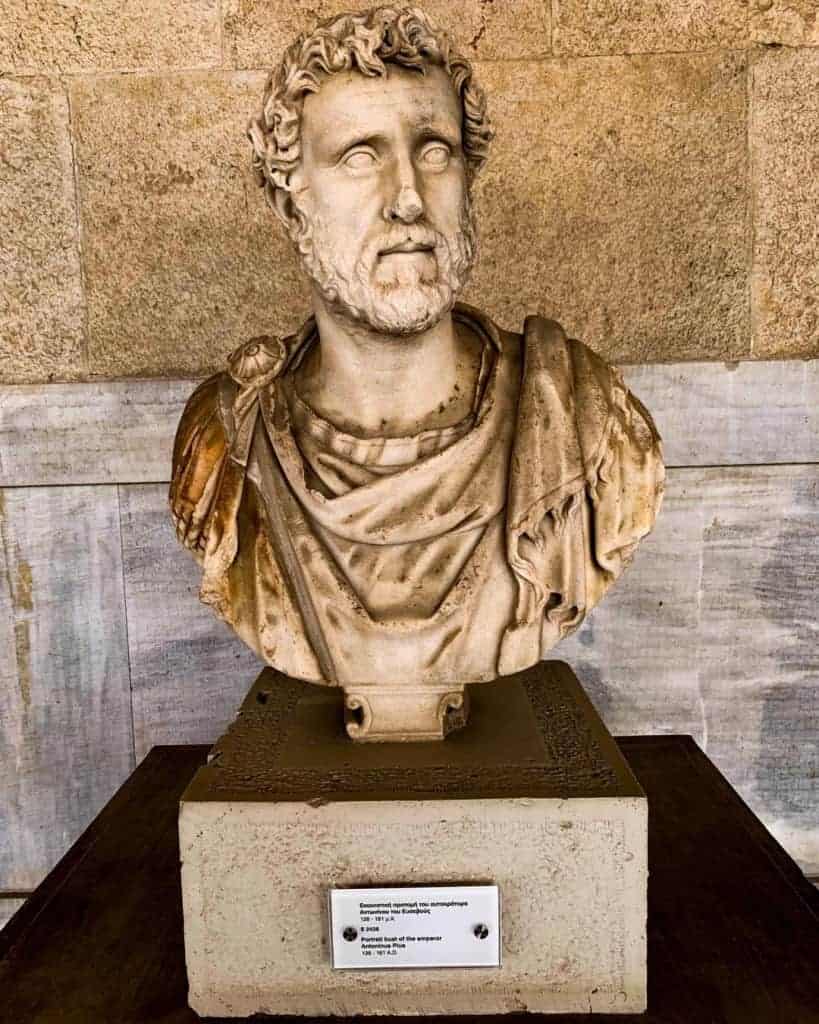
The Ancient Agora in Athens is one of the most historically significant landmarks in Greece. It dates back to the 6th century BC and contains several notable buildings within its boundaries.
“Agora” in both Ancient and Modern Greek translates to meaning “marketplace”. Indeed, this historic marketplace was once a hubbub of local activity and a major rendezvous point for Athenians.
Revered Greek Philosophers such as Plato, Aristotle, and Socrates would once wander the grounds of the Ancient Agora, giving speeches and sharing wisdom with the locals. There are a few important buildings to note here.
The Temple of Hephaestus is remarkably well preserved. It dates back to 450BC and was the first temple in the world to be built entirely out of Pentelic marble.
It is the best-preserved Doric temple in the Greek world today and was built in honour of Greek Gods Hephaestus and Athena Ergane. You should also look out for the Stoa of Atticus.
This two-story structure was the city’s main marketplace and it was home to more than 40 stores during its heyday. They sold everything from apparel and accessories to fruits and vegetables.
The Stoa was originally built in 159BC as a gift to the people of Athens from King Attalos II of Pergamon. It was sadly largely destroyed in 267AD and was then carefully rebuilt in the 1950s.
Delphi
The ancient city of Delphi is one of Greece’s eighteen UNESCO-protected sites. Furthermore, it is one of the most important landmarks in Greece from a historical and cultural perspective.
The site here was built in the 8th century BC in honour of the Greek God Apollo. According to Greek mythology, Zeus sent two eagles on a mission to find the centre of the universe. The eagles flew to Delphi and thus, the city was born!
There are several points of interest around the Delphi site. You can explore the Temple of Apollo, an old amphitheater, and the local archaeological museum.
Today, Delphi is one of the most popular day trips from Athens. It is possible to visit the site independently or take an excursion with one of several local tour companies that run daily trips to the area.
Vikos Gorge, Northern Greece
The Vikos Gorge in Northern Greece is one of the best places for hiking in Greece. It also holds the title of being the deepest gorge in the world!
Hiking the entirety of the gorge is said to take about 7 hours in total. However, part of the appeal is to be found in splitting the journey over several days and stopping at quaint stone villages along the way.
Many of the villages in the Vikos Gorge area boast picturesque, homely guesthouses and traditional tavernas that serve up hearty classic Greek food. You can take the bus from Ioannina to Monodendri to start your trip.
The Samaria Gorge, Crete
Crete’s Samaria Gorge sits in the province of Chania. This is the longest gorge in Europe, as well as one of the most visually stunning.
The gorge runs across Crete from Agia Roumeli to Xyloskalo. Its entire length extends over 16km.
There are various hiking trails that twist and turn around the area. There is something for every hiker regardless of age or experience.
Arguably the most popular Samaria Gorge hiking trail is the ascent to the peak of Gigilos. This is relatively challenging and follows a steep incline. A lesser-known option is to hike from the Samaria Gorge entrance up to the white mountains and the Katsiveli shelter.
Corinth Canal
The Corinth Canal is a narrow strait in western Greece that connects the Saronic Gulf to the Gulf of Corinth. The canal is now too narrow for modern ships to sail through, although touristic boats often depart for the area from Piraeus.
Once upon a time, however, the Corinth Canal was an important navigational route. It allowed boats to enter the Aegean sea and was of the utmost economic importance for Greece.
Spinalonga Island, Crete
Spinalonga is a craggy islet just off the coast of Crete. It boasts a macabre and tragic history that contributes to the eerie atmosphere that still remains on the island today.
The Venetians built a defensive fortress on the islet in 1579. They still kept control of little Spinalonga, even when nearby Crete had been conquered by the Ottomans.
In more recent history, Spinalonga is known for being the “island of lepers”. In 1904, anyone afflicted with leprosy was exiled to the island. The island was still operational until 1957.
Mystras
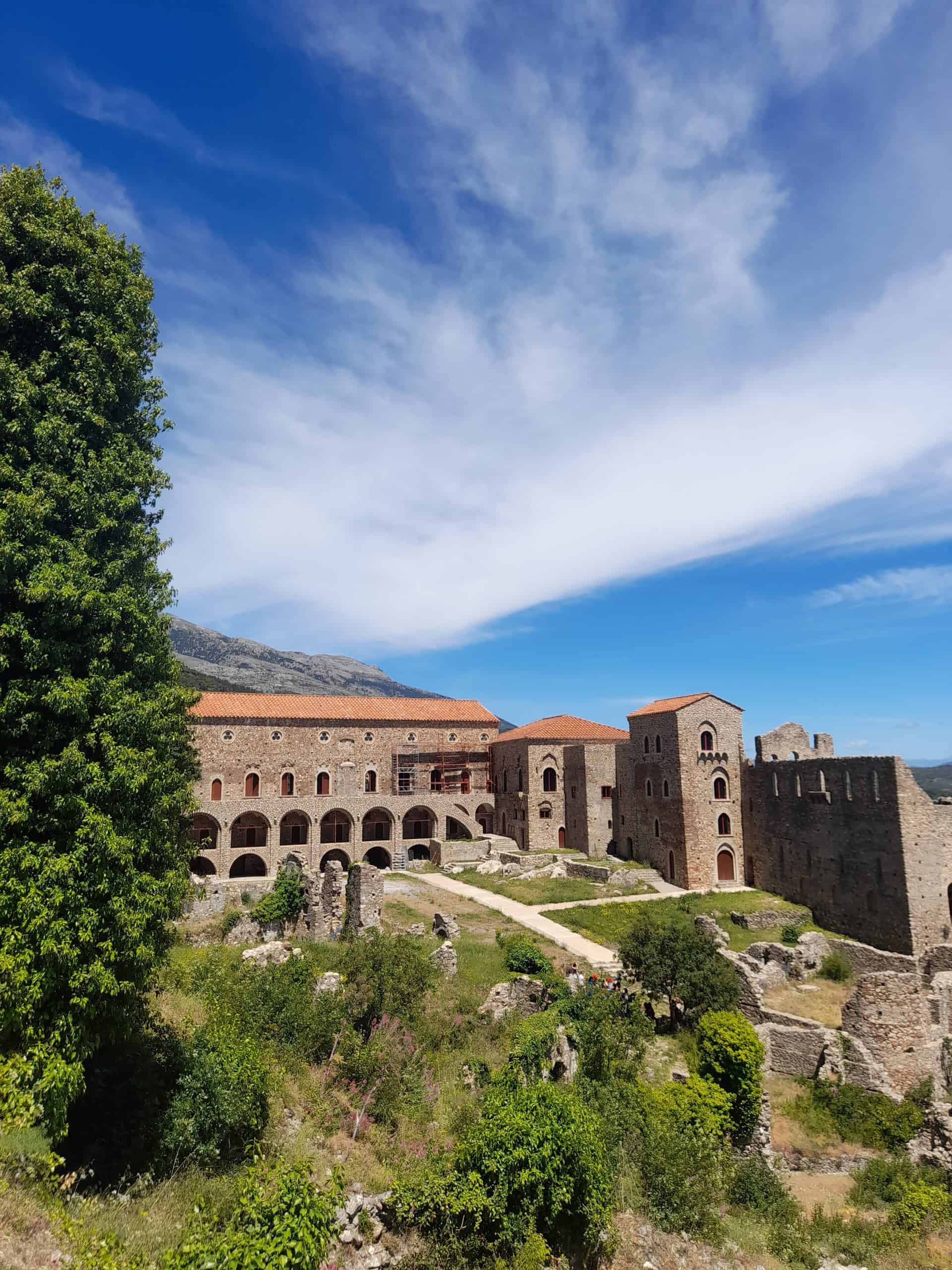
Mystras is a UNESCO world heritage site in the Laconia region of the Peloponnese. The fortified town was one of the most important settlements in Greece during the Byzantine era. Its importance was second only to Constantinople (now Istanbul).
One of the highlights of visiting the area is entering the ornate churches and admiring the vibrant frescoes that adorn their interiors. There is also an archaeological museum in the area that contains many Byzantine and religious artifacts.
Navagio “Shipwreck Beach”, Zakynthos
Navagio beach is one of the most beloved coastal areas in Zakynthos (Zante). It is renowned for its crystal-clear waters and white-sand beaches.
The beach was originally known as “Agios Georgios”. However the name “Navagio” comes from the shipwreck that washed ashore in 1983. The ruined boat once transported illegal cigarettes around the Mediterranean.
Navagio beach makes an appearance time and again in various publications’ lists of the best beaches in Greece. Various boat tours operate in the area taking you to shipwreck beach, and several hidden coves and caves nearby.
The Epidaurus Theatre
Greece’s ancient Epidaurus theatre is today known for being the location of the country’s annual Epidaurus festival, one of the most important festivals in Greece. The ancient site dates back to 330BC.
In its heyday, the theatre held between 13,000 and 14,000 people. It hosted musical performances and ritual worship of Asclepius.
The Epidaurus Festival takes place every year between the months of May and October. It is one of the oldest festivals in Europe and has been occurring for more than 65 years.
Ancient Olympia
As the name suggests, Ancient Olympia was the birthplace of the Olympic Games. Today, this is one of the most important historical sites in Greece.
There are various temples and ruins scattered around Olympia. The ancient stadium is of course the highlight of a visit here. However, equally interesting are the Temple of Zeus, the Temple of Hera, and the workshop of Phedia.
Knossos Palace, Crete
The archeological site at Knossos sits just outside the city limits of Heraklion, Crete. It is arguably the island’s most famous tourist attraction.
The palace sits on the slopes of Kefalas mountain and is one of the best examples of Crete’s Minoan past. It is believed that the mythological labyrinth that once held the terrifying half-man, half-bull minotaur was supposed to be set at Knossos.
Bourtzi Fortress, Nafplio
The tiny islet of Bourtzi floats just off the coast of the city of Nafplio – Greece’s former capital city. The entirety of the islet is occupied by its namesake fortress which gives the appearance of a mysterious, floating structure.
Bourtzi fortress was constructed by Italian Architect Antonio Gambello back in 1471. Its main purpose was to protect the Venetians from pirate attacks. Boats run here frequently from Nafplio port. It is also possible to kayak across the water.
Parting Words
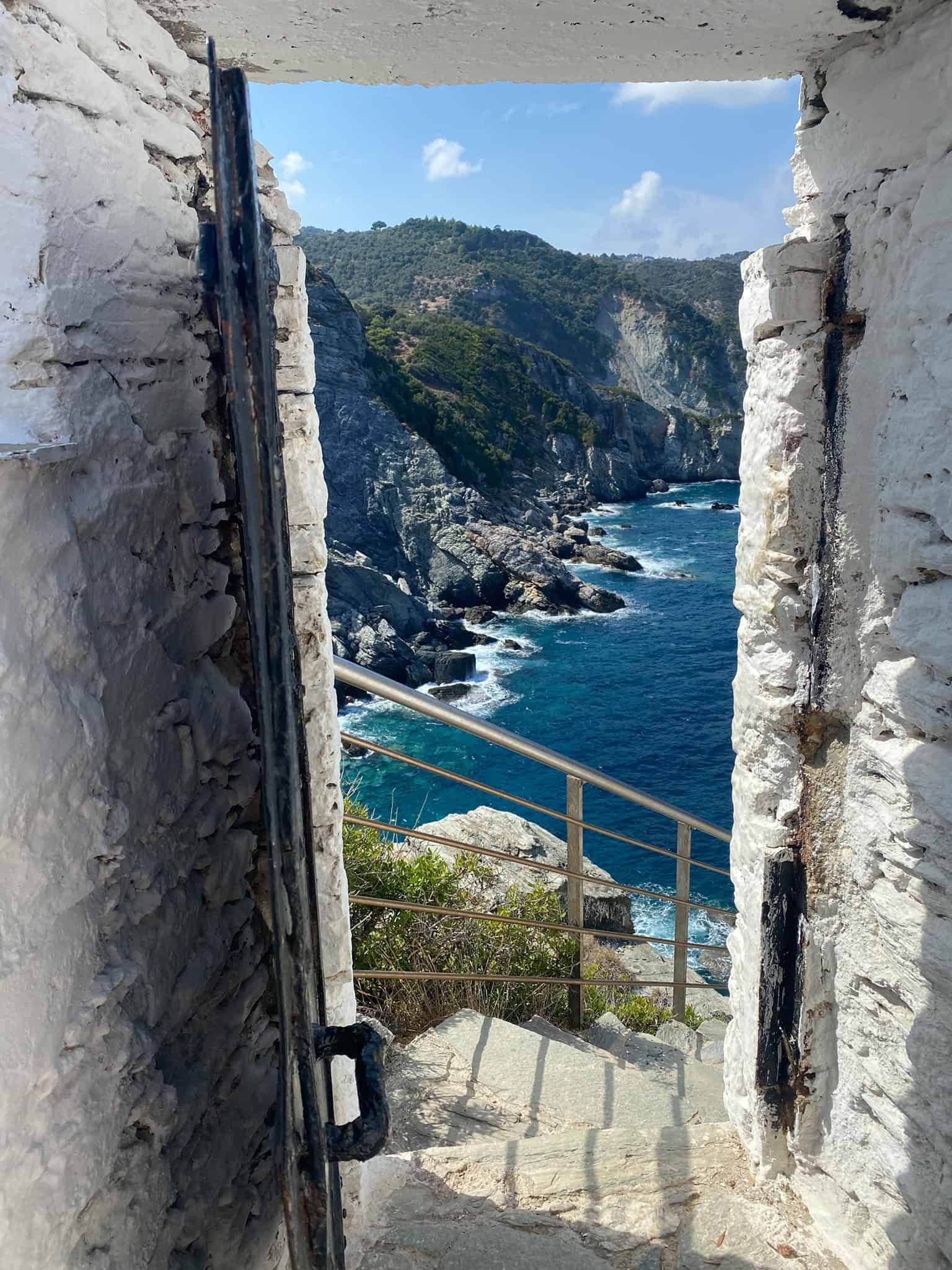
How many of these famous landmarks in Greece have you seen? Do you need any assistance in planning your holiday to Greece?
Please don’t hesitate to contact me with any questions and queries you may have. I’ve been living in Greece since 2017.
Safe travels! Geia sou!
